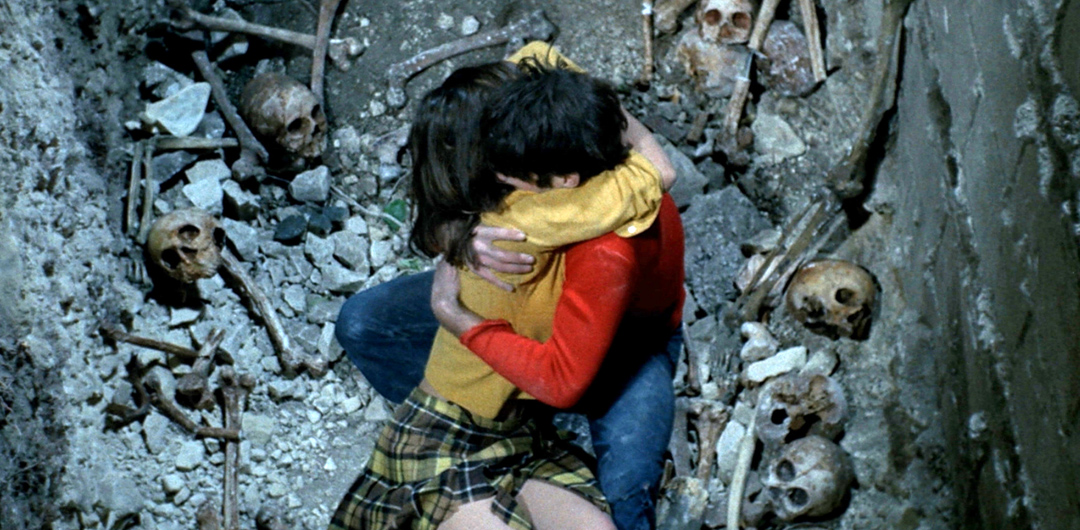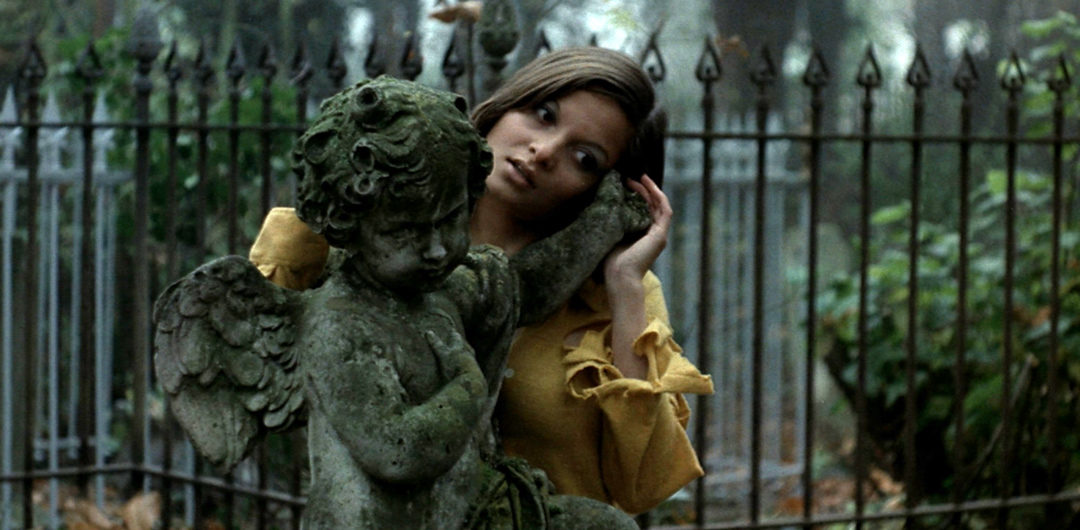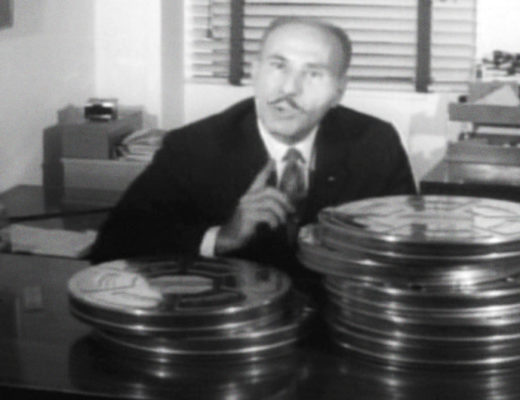You can never be too patient.
For the past fifty years, French trash dilettante Jean Rollin has steadily cultivated an obsession with breasts, pubes, and their respective placement within the canon of horror films. Without proper context, that statement may sound crass. So let’s get proper.
Vampires. Isolation. Sexuality. When it comes to a Rollin film, those are the big three, the raw iconographies which define his work as equally as the dreamy visuals. Whether the film moves (Requiem For A Vampire), drags (The Rape Of The Vampire), or seduces (Bacchanales Sexuelles), there’s a certain esteem to be had in the knowledge that Rollin will caress the same themes year after year after year. Suitably, Rollin’s vast filmography becomes a sort of instant repose for those who find his work captivating; it’s always laudable, but rarely momentous. Until he goes off the rails.
The Iron Rose is a divergence for Jean Rollin. And, much like the later Zombie Lake, that divergence is grounds for celebration. Though soaked in desolation, this film abandons the vampires and softens the sex. Familiarity removed, there’s more room to stretch out and explore, for both filmmaker and audience. So where do we go with this newfound liberation? That’s right — we go to a cemetery. With a clown in it. On the night after Halloween.
The Iron Rose is A Man And A Woman on Rollin’s terms. The simplistic film follows a budding relationship between two people. But where Claude Lelouch’s ponderous eye-candy is all roses and chivalry, Rose cuts to the dark ‘n’ dirty chase. Chance meeting. Date. Tomb sex. Locked gates. Madness. Sure, the entire film takes place in a cemetery (with a few beach fantasies for kicks). And yes, established horror elements are thrown out the window. This is pretty much two people running around, making love, fighting, screaming at each other, and trying to escape from a graveyard for 85 minutes. Not at all what we expect. But like the majority of Andy Milligan‘s legacy, that’s what makes it so irresistible.
“That’s the way that we’ll leave real life. All the happiness in the world…death.”
The erotic energy of actress Françoise Pascal. Relentlessly stunning photography. A soundtrack seeped in sparse, spooky effects and musique concrete experiments. These are the things that carry The Iron Rose, the tangible components that thrill, and thrill alone. But then, there’s the other side. Rollin’s films always flirt with a certain amount of poetic ambivalence, whether heard or seen. Here, that inclination is bolstered with a fresh preoccupation — the romance of death. And so, the usual ambivalence doesn’t sound (or look) very ambivalent. We absorb details. They stick. We might not understand them, at least at first, but they’re not disposable. This awareness goes a long way towards augmenting Rose with an intelligence and poignancy that encourages a shift from strict mood-piece to beautifully layered (and beautifully immersive) trash-art experience. Even if it may take more than one viewing to get there.
As for the Iron Rose itself? You’ll find out.
The Iron Rose is a trash-art coup, a figurative variant on Jean-Luc Godard’s Weekend minus the bleak hangover. It’s curiously cerebral, chilling, and divorced from Rollin’s vamp-sex trick-bag. You can feel the distinction in every beauteous frame. Plus, the whole thing takes place in a graveyard on All Hallow’s Day. My advice? See it. Then, watch again every October. Infinity.






